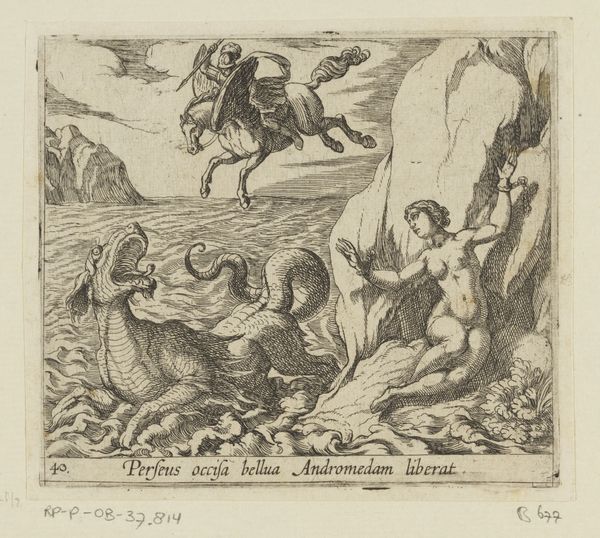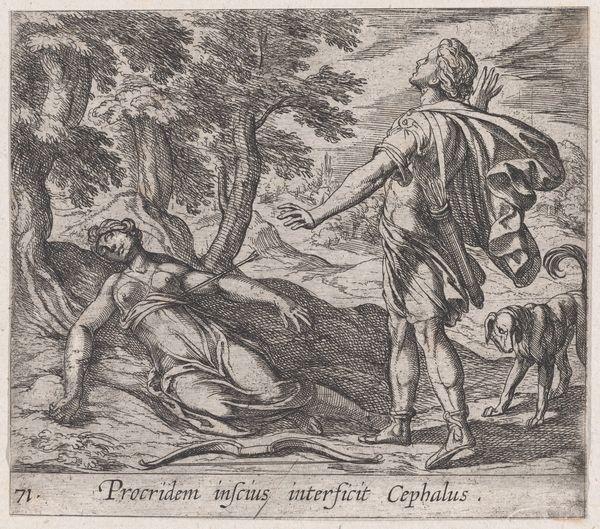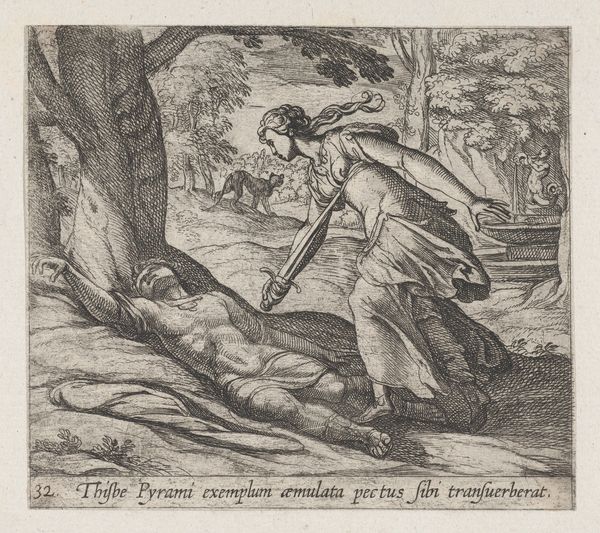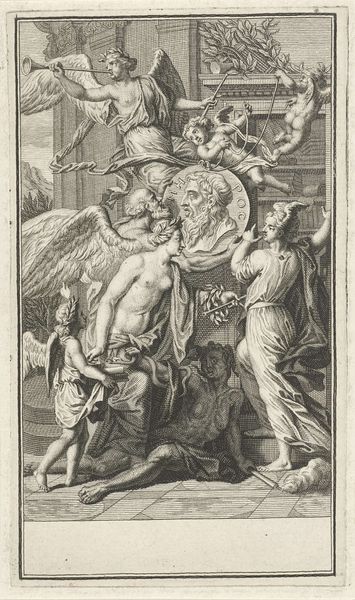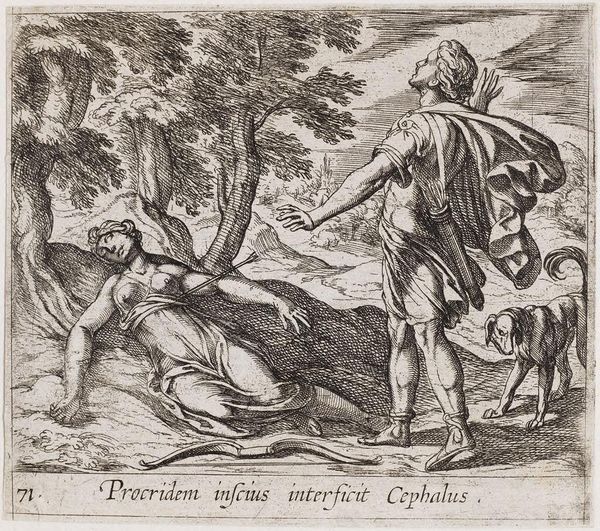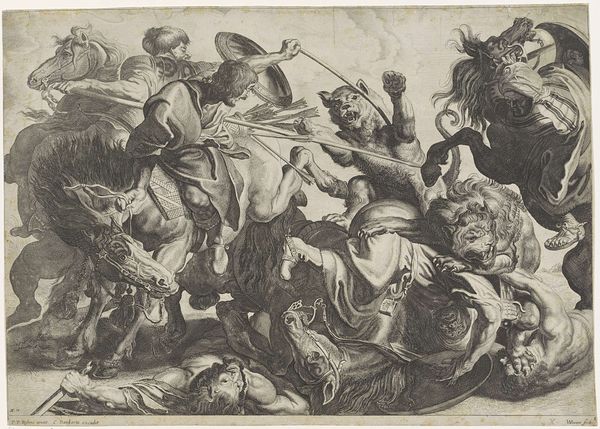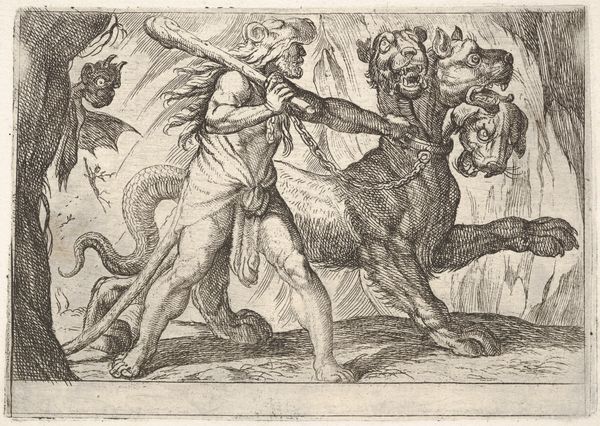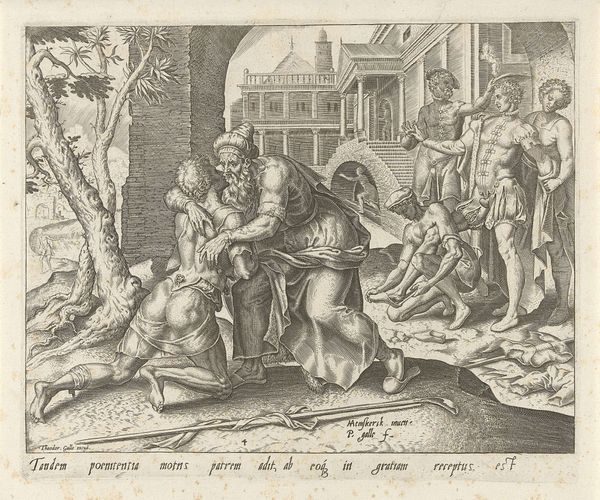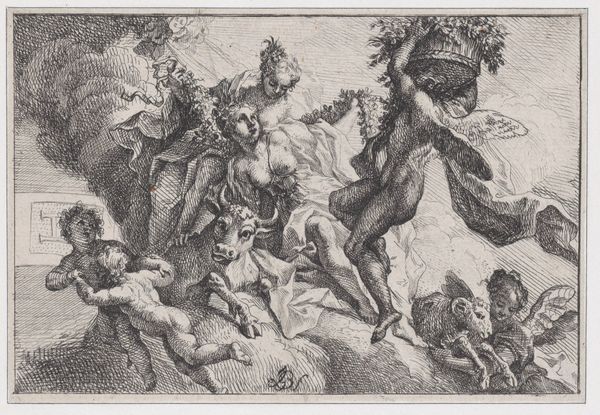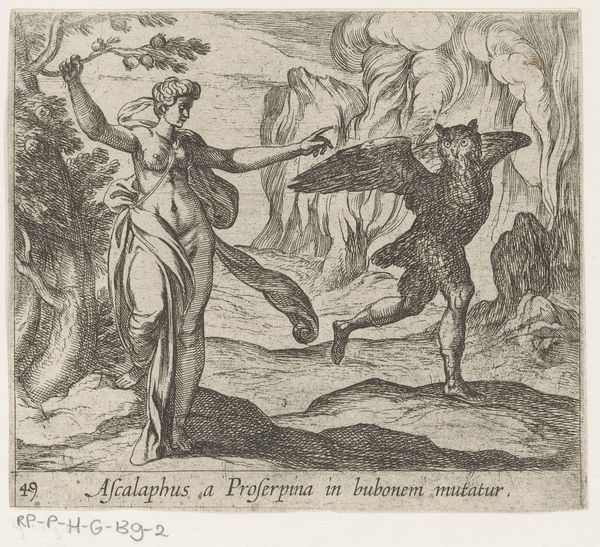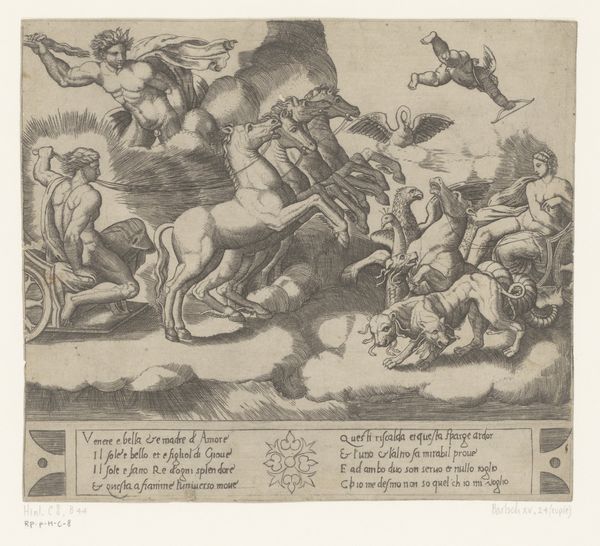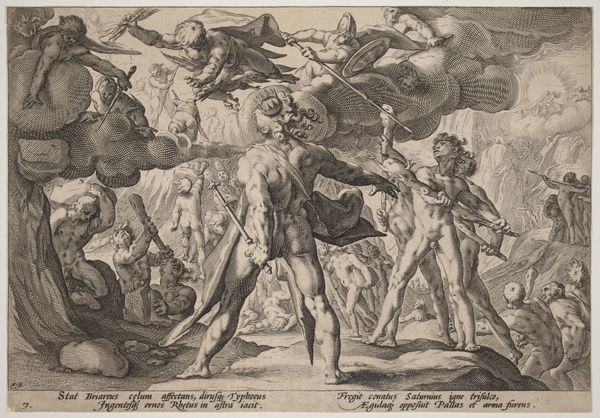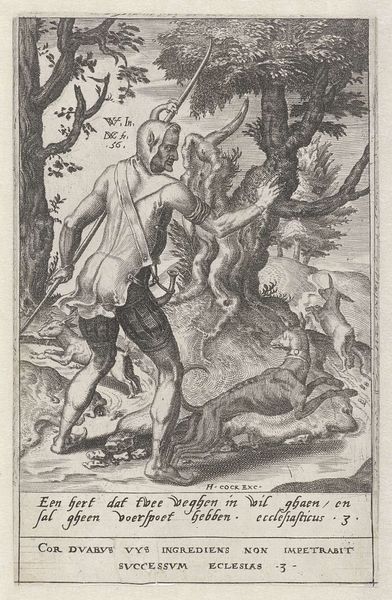
Plate 41: Perseus Killing Medusa (Anguiparum Meduse caput praescundit Perseus), from Ovid's 'Metamorphoses' 1606
0:00
0:00
drawing, print, etching, engraving
#
drawing
#
allegory
# print
#
etching
#
landscape
#
mannerism
#
figuration
#
ancient-mediterranean
#
history-painting
#
italian-renaissance
#
engraving
#
sword
Dimensions: Sheet: 4 in. × 4 1/2 in. (10.2 × 11.5 cm)
Copyright: Public Domain
Editor: This etching, "Plate 41: Perseus Killing Medusa," by Antonio Tempesta, was created in 1606. Looking at it, I'm immediately struck by the violence and theatricality, but also the intricate detail achieved through the etching process. What catches your eye in terms of its materials and context? Curator: For me, this print throws into sharp relief the means of production and circulation of imagery at the time. Tempesta, through etching and engraving, essentially mass-produced this scene from Ovid's 'Metamorphoses.' Consider the labour involved: the skilled artisan meticulously incising the metal plate, the press operators, and then the distribution networks. Who was consuming these images, and what did they signify in that consumption? Editor: That's fascinating. I hadn't really thought about the production line behind it. So, are you saying the *act* of making the print is as important as the image itself? Curator: Absolutely! Think about it: the image of Perseus, a classical hero, is detached from unique artistic creation and becomes a commodity, subject to market forces. Was Tempesta making a political statement through reproduction and access or simply fulfilling demand? The use of copper, the etching tools, the paper, the ink – all represent resources and labour exploited within a specific economic and social system. What value did such prints have as an embellishment within private households of the Renaissance era? Editor: I see what you mean. By focusing on the materiality and the production process, we can better understand the work’s significance beyond just the mythological story it depicts. I hadn't thought about it as a manufactured product within its own economic ecosystem. Curator: Precisely. The myth becomes just one component of a much larger material reality. Now think of its relationship to luxury: What do the dense and sophisticated line work tell you about consumption and status at the time? Editor: Thinking about it that way completely shifts my perspective. It's not just about Perseus and Medusa, it's about labor, access, and consumption in the 17th century! Thank you!
Comments
No comments
Be the first to comment and join the conversation on the ultimate creative platform.
